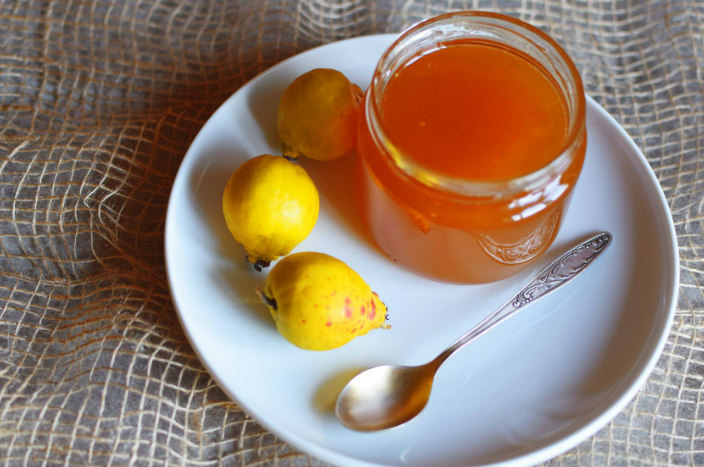
When we think of a , most of us probably think of Passover. We often associate the seder with the Haggadah, a festive (-free) dinner, and the ornate seder plate assorted with symbolic foods. However, Passover isn’t the only time of the Jewish year in which we can have a seder. Many Jews, especially in the and Jewish communities, bring out another seder plate for Rosh HaShanah, the Jewish new year.
In a way, the Rosh Hashanah seder is almost a perfect complement to the Passover seder. While the Passover seder focuses on the Jewish people’s difficult past, the Rosh Hashanah seder serves to guide us into the future – specifically, a very sweet future.
The seder plate is filled with special foods called simanim, which literally means “signs.” These foods symbolize good omens for the future, and the imperative to eat them on Rosh Hashanah comes directly from the Talmud: “A person should always be accustomed to seeing these on Rosh HaShanah: squash and fenugreek (a clover-like herb), leeks and chard, and dates, as each of these grows quickly and serves as a positive omen for one’s actions during the coming year” (Horayot 12a).
The Sephardi and Mizrahi Jewish communities use this verse as a guide when they hold their Rosh HaShanah seders, complete with the following typical items (often with inventive puns).
Tamar (Date)
While Rosh HaShanah is about new beginnings, we also know the importance of endings. Tamar, or “date” in Hebrew, is similar to the word "yitamu," which means “to end.” In addition to its sweetness, the date wishes an “end” to any ill will others may wish on us.
The date can also symbolize the end to injustice, apathy, indifference, racism, transphobia, and sexism. Without putting an end to the things that harm us or hold us back, we cannot move forward to a new beginning.
Rimon (Pomegranate)
The pomegranate is commonly associated with Judaism for a reason: Its numerous seeds. According to a , the pomegranate contains 613 seeds, which symbolize the 613 . While we know that not every pomegranate has this many seeds, this allegory encourages us to fulfill mitzvot and live righteous lives.
The pomegranate prompts us to consider what seeds of our own we want to plant for the sweet new year. We may reflect on what ways we you want to uplift others, grow Jewishly, or pursue justice.
Rubia (String Bean)
Rubia (bean/legume, often associated with string beans) is similar to the Hebrew "yirbu," which means “to multiply.” This siman beckons to a future wherein our merits and blessings will have multiplied. Libyan Jews often substitute string beans with a mixture of sugar and sesame seeds, symbolizing the wish for as many blessings as there are sugar crystals and seeds on the seder plate.
In our Jewish communities, there may be new ideas or blessings we want to help multiply in the year to come. Perhaps there are new lessons that each of us can teach from our own unique merits. The rubia helps us to uplift the many blessings that come when our communities commit to celebrating and uplifting our diverse identities.
Karti (Leek/Scallion)
On Rosh HaShanah, many Jews tear these vegetables into pieces and toss them over their shoulders, beckoning God to cut off our enemies. This is because "karti," which is Hebrew for scallion/leek, sounds a lot like the word "yikartu," which means “cut off.”
While we may not have literal “enemies” at our back, there may be internal beliefs or challenges that we wish to throw over our shoulders as we step into the new year. The High Holidays are a wonderful time to reflect on how to release that which no longer serves us, as well as ideas or relationships that hold us back.
Salka (Beet)
Salka, which is Aramaic for beet, sounds similar to the Hebrew word "siluk," which means “removal.” Sephardi and Mizrahi Jews eat these while asking God to remove our enemies from our path. We can use this symbolism the same way we do leeks and scallions: as a reminder to remove things from our life that are keeping us from achieving our aspirations.
K’ra (Pumpkin/Gourd)
K’ra is very phonetically similar to the word "kara;" the former means pumpkin/gourd, and the latter means “to tear apart” and “to proclaim.” Jews use this pun to ask that God “tear apart” every evil decree against us and “to proclaim” our good merits or blessings. This can serve as a reminder for us to be thankful and hopeful for the future, even when things seem difficult to handle.
Gezer (Carrot)
The Hebrew word "gezer" sounds like the word "ligzor," which means to “cut off” and “to decree.” Are you beginning to see a pattern here? Like the pumpkin, this siman is symbolic of the wish that God judge us with positive decrees. Additionally, in Yiddish, the word for “carrots” and “to increase” are the same – "mehren" – and Eastern European Jews use this as a blessing for an increased bounty. Similarly, we can use this siman as a reminder of the bounty and the positivity that we are capable of sharing with those around us.
Fish
Speaking of bounty, some Sephardi and Mizrahi Jews serve fish on Rosh HaShanah as a symbol of plenty and fertility. As a vegetarian alternative, you can use an egg (similar to Passover) or whatever symbolizes bounty and fertility to you.
Rosh (Head)
Many Jewish communities take the meaning of Rosh HaShanah – “head of the year” – literally by putting a fish head or a lamb’s head on the seder plate. While many opt not to eat the head, many see it as a reminder of the , the binding of Isaac, and the ram that was sacrificed on his behalf, as well as a prayer that we be more like the “head” and less like the “tail” in the coming year.
Apples/Quinces and Honey
Dipping apples in honey is the most widely known imagery for Rosh HaShanah and a prayer for “a sweet new year.” For Sephardi and Mizrahi Jews, this is no different. Iraqi Jews bake their apples with sugar and Yemenite Jews use quinces (pear-like fruits) instead of apples.
Regardless of what we choose to eat and serve on our seder plates, the symbolism of sweetness and a new year with endless potential can inspire all of us to live with passion, love, and righteous action.



